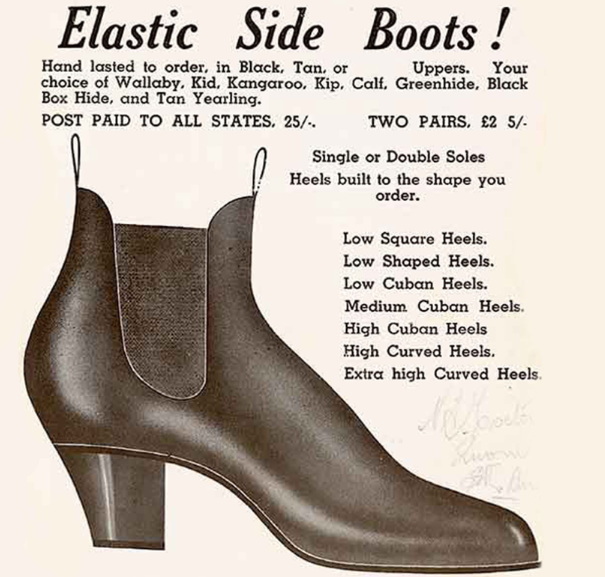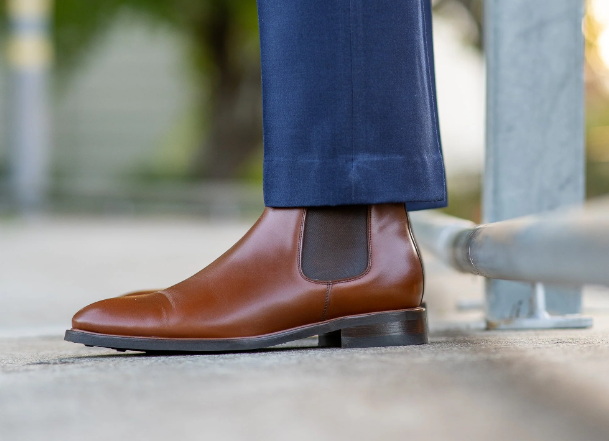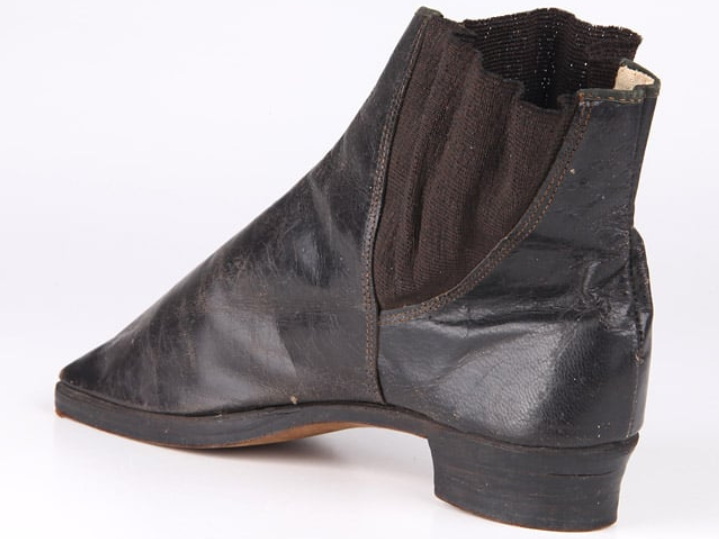Content Menu
● Introduction to Chelsea Boots
>> Key Features of Chelsea Boots
● History of Chelsea Boots
>> Victorian Era Origins
>>> Early Adoption
>> Evolution and Popularity
>>> 1960s Mod Culture
>>> Modern Variations
● Styling and Versatility
>> Formal Wear
>> Casual Wear
● How to Choose the Right Chelsea Boots
>> Fit
>> Materials
>> Style
● Cultural Impact of Chelsea Boots
>> Influence on Music and Fashion
>> Contemporary Fashion
● Maintenance and Care
● Conclusion
● FAQs
>> 1. What are the key features of Chelsea boots?
>> 2. How did Chelsea boots get their name?
>> 3. Who invented Chelsea boots?
>> 4. What occasions are Chelsea boots suitable for?
>> 5. How should Chelsea boots fit?
Chelsea boots have been a staple in fashion for over a century, known for their sleek design and versatility. This article delves into the history of Chelsea boots, their evolution, and how they became a timeless fashion icon.

Introduction to Chelsea Boots
Chelsea boots are characterized by their elastic side panels, which allow them to be easily slipped on and off without the need for laces or buckles. This innovative design was first introduced during the Victorian era by J. Sparkes-Hall, a renowned bootmaker for Queen Victoria.
Key Features of Chelsea Boots
- Elastic Sides: The hallmark of Chelsea boots, these elastic panels enable effortless wear and removal.
- Ankle Height: Designed to cover the ankle, providing protection and style.
- Low Heels: Originally designed for walking, with a low heel height.
- Two-Part Construction: Comprising the vamp and quarters, joined by elastic near the ankle.
History of Chelsea Boots
Victorian Era Origins
The Chelsea boot's origins date back to the mid-19th century when J. Sparkes-Hall designed a boot with elastic gussets for Queen Victoria. This innovation was facilitated by Charles Goodyear's invention of vulcanized rubber, allowing for durable elastic.
Early Adoption
Initially known as "paddock boots" or "J. Sparkes-Hall boots," these early Chelsea boots quickly gained popularity among equestrians due to their practicality. The elastic sides made them easy to put on and remove before and after horseback riding.
Evolution and Popularity
1960s Mod Culture
Chelsea boots became a symbol of mod culture in the 1960s, particularly among the "Chelsea Set," a group of fashionable young people in London. This association with the affluent Chelsea neighborhood led to the boots being named after it.
Modern Variations
Today, Chelsea boots come in a variety of styles, from classic leather to more modern materials and designs. They are no longer limited to traditional black leather but are available in numerous colors and finishes. This versatility has contributed to their enduring popularity across different fashion trends.
Styling and Versatility
Chelsea boots are incredibly versatile, suitable for both formal and casual occasions. They can be paired with suits for a modern twist on traditional formal wear or with jeans for a stylish casual look.
Formal Wear
For formal events, opt for a pair with a sleek, minimalist design. Black or dark brown leather is ideal for pairing with a suit or dress pants. The simplicity of Chelsea boots allows them to complement formal attire without drawing attention away from the overall outfit.
Casual Wear
For casual wear, Chelsea boots can be paired with jeans or trousers. They add a touch of sophistication to any outfit while maintaining comfort. The versatility of Chelsea boots makes them a staple in many people's wardrobes, as they can easily transition from a day at the office to a night out.

How to Choose the Right Chelsea Boots
Fit
Chelsea boots should fit snugly around the ankle. Since there are no laces, it's crucial to get the right size to ensure comfort and prevent the heel from slipping out. Trying them on is essential to ensure a proper fit.
Materials
High-quality leather is recommended for durability and style. Consider the type of sole—leather for dress wear or rubber for everyday use. Leather soles provide a sleek look, while rubber soles offer better traction and durability.
Style
Opt for a classic design for versatility. If you prefer something more unique, consider variations with brogue detailing or different toe shapes. Brogue detailing adds a touch of elegance, while different toe shapes can provide a modern twist.
Cultural Impact of Chelsea Boots
Chelsea boots have had a significant impact on fashion culture, transcending generations and styles. From their origins as practical footwear for equestrians to their current status as a fashion staple, they have been embraced by various subcultures and fashion movements.
Influence on Music and Fashion
In the 1960s, Chelsea boots were a defining element of mod fashion, often paired with slim-fit suits and narrow trousers. This style was heavily influenced by British mod culture and was popularized by bands like The Beatles and The Rolling Stones.
Contemporary Fashion
Today, Chelsea boots continue to influence contemporary fashion. They are often featured in runway shows and are a favorite among celebrities and influencers. Their versatility makes them a go-to choice for both red-carpet events and casual streetwear.
Maintenance and Care
To ensure your Chelsea boots last long, proper care is essential. Here are some tips:
- Cleaning: Use a soft cloth and a mild soap solution to clean the leather. Avoid harsh chemicals that can damage the material.
- Conditioning: Regularly condition the leather to keep it supple and prevent cracking.
- Storage: Store your boots in a cool, dry place away from direct sunlight to prevent fading.
Conclusion
Chelsea boots have evolved from their Victorian origins to become a staple in modern fashion. Their timeless design and versatility make them suitable for a wide range of occasions. Whether you're looking for a classic formal look or a stylish casual outfit, Chelsea boots are an excellent choice.

FAQs
1. What are the key features of Chelsea boots?
Chelsea boots are characterized by their elastic side panels, ankle height, low heels, and two-part construction. These features make them easy to wear and versatile for various occasions.
2. How did Chelsea boots get their name?
Chelsea boots are named after the Chelsea neighborhood in London, where they became popular among the fashionable "Chelsea Set" in the 1960s.
3. Who invented Chelsea boots?
Chelsea boots were invented by J. Sparkes-Hall, a bootmaker for Queen Victoria, during the Victorian era.
4. What occasions are Chelsea boots suitable for?
Chelsea boots are suitable for both formal and casual occasions. They can be paired with suits for formal events or with jeans for casual wear.
5. How should Chelsea boots fit?
Chelsea boots should fit snugly around the ankle. It's important to choose the right size to ensure comfort and prevent the heel from slipping out.

















